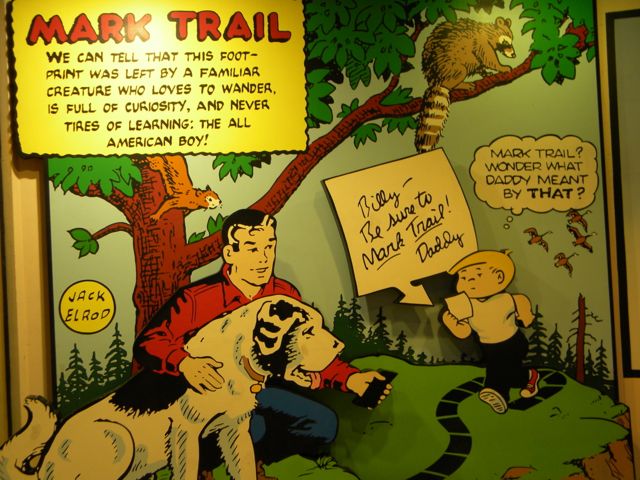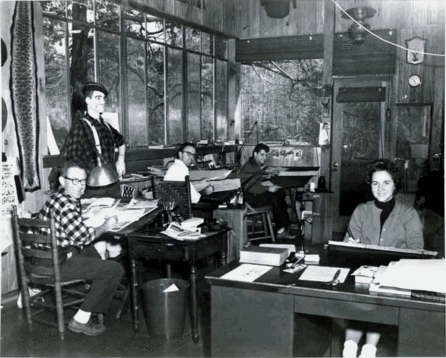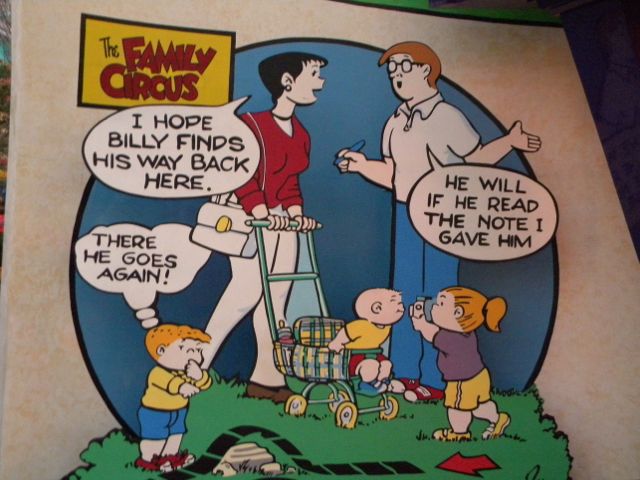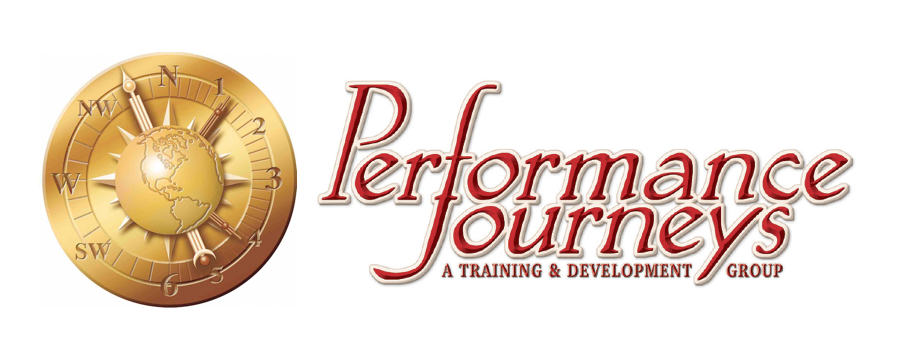What Qualities Do You Look For In The Place You Work At?
At Universal’s Islands of Adventure there are two comics that intertwine in Toon Lagoon. They are simply incidental theming to the park, but they offer a couple of great thoughts about creating a great work environment.

The first is a comic known for many years as Mark Trail. Mark Trail is a comic strip created by Jack Elrod, and featured themes that focused on the environment. It was targeted to those who appreciated the great outdoors, and was often instructional in its ideas about how to care for nature and its surroundings. To inspire his small team, Jack assembled his artists in the second floor of a Frank Lloyd Wright-designed home in the Atlanta area. Windows looked out over a 130-acre forest that surrounded the home. It provided inspiration for many of the comic strip adventures.

I’ve had the privilege of visiting some impressive work environments. Google has so many cool amenities. Red Door Interactive overlooks the Padres Stadium in San Diego. And speaking of natural settings–the U.S. Fish and Wildlife Service had a beautiful training facility in the hills of West Virginia. And yet, it isn’t just about the location, the appointments, and the amenities. It’s about the people you work with, and the esprit de corps.
That brings us to the other comic depicted–Family Circus–created by Bil Keane. It’s the depiction of family life, and the humor, love, and camaraderie found therein. In another Toon Lagoon panel, you can trace the trail from Billy back to the rest of the family.

There were a couple of key elements found in this comic, which coincidentally tie into any workplace culture:
1. Values. There are strong messages written humorously throughout the comic strip. Themes of being grateful, courteous, and caring are among just a few.
2. Gremlins. In 1975, Keane introduced an invisible Gremlin named “Not Me”, which becomes a way for the kids to place the blame on anyone but themselves. Other gremlins were introduced like “Just B. Cause” and “Ida Know”. These same gremlins often creep up in organizations, unless they are defined and thrown out.
3. Dotted Paths. A dotted thick line would often show a character’s path through the house or down the street. We can see that same path utilized here in the comics depicted in Toon Lagoon. In business, this is represented by providing people a path of opportunity for them to grow and develop. In Bil Keane’s family, that path provided opportunities for his own children. Billy in the cartoon is really a representation of Bil’s own son Glen Keane, who went on to be a major character animator at Disney, to include Aladdin, Ariel, The Little Mermaid, Tarzan and the Beast in Beauty and the Beast.

What messages does this comic strip have for our work environment? I just got through doing two weeks of programming for a major college in New York. The comment that came up repeatedly was how when the college was small, it “felt like family”. When you stop to dissect that statement, you really it isn’t that the group was small. It was that they knew each other. They were more dependent on each other. They worked together to make things happen. These are the things that make a family a family–even at work.
And yet, there is nothing that stops a family from being a family–even when it grows bigger. I’ve known families with a dozen kids, and none of the older children ever say: “Back when there were only two kids it used to feel more like family.” Family doesn’t stop because it grows. Family stops because you stop working to nurture it. And the bigger the family, the more you have to nurture it.
People don’t leave brick and mortar. They may be attracted to the physical assets of the organization, but in the end they stay because “it feels like family”. What about your organization? Does it feel like family? Are there strong values that bring people together? Are there gremlins that get in the way? Is there a path for your success? How are you “marking the trail” in a way that makes the organization successful?

2 thoughts on “The Trail to a Great Work Environment”
Comments are closed.